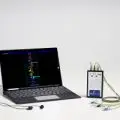What is separation anxiety?
Separation anxiety refers to the fear of separation from a home or from a person, and while it used to only apply to under the age of 18, the diagnosis can now be applied to someone of any age. As we are all born with a certain level of emotion relating to being away from our home or our significant others, the condition is characterised by a reaction that might exceed normal developmental levels, and it can affect children and adults alike.
In children, separation anxiety might present itself as clinginess to an attachment figure such as a parent or care giver (for example, not wanting to leave a parent’s side when they are dropped off at day care or school), or a reluctance to go to sleepovers they are invited to or to camps. They may show extreme signs of homesickness when away, which can manifest into physical symptoms such as nausea, lack of appetite and headaches. They can become withdrawn and appear sad, and develop an irrational fear of what can be classified as dangerous or risky situations or experiences such as plane travel, animals, criminal activity such as kidnapping and burglary.
In adults, the symptoms can vary but generally they can manifest as anxiety around being away from certain important people in their lives, a reluctance to travel or have experiences by themselves, have nightmares about these situations. Alternatively they may also experience anxiety about the whereabouts or activities of a loved one. For both adults and children, separation anxiety can affect their lives significantly, and cause conflict and tensions within the family unit.
What are the signs and symptoms of separation anxiety?

The signs and symptoms of separation anxiety disorder can include the following:
- Fear about being away from a certain person or from home for any length of time
- Excessive worry about scenarios involving being separated from a loved one or from home, for example, being kidnapped or getting lost
- “Clinging” behaviour including not wanting to leave someone’s side, outside the home or even within the home from room to room, or a fear of being alone
- Avoidance of situations where they may be away from attachment figures such as overnight sleepovers, camps or holidays
- Nightmares and night terrors involving separation anxiety
- Physical symptoms such as nausea, headaches and a lack of appetite while experiencing separation anxiety
While we all may experience some of these symptoms occasionally throughout our lives, to be considered separation anxiety, they must have been present for at least six months for adults and four weeks for children and adolescents. They must also have had a significant impact on everyday life – whether it is school, family or a work environment.
How common is separation anxiety?
It has been estimated that around one to two percent of adults, almost 2 percent of adolescents and over 4 percent of children may experience separation anxiety, with males and females being equally affected.
What are the causes of separation anxiety?

General anxiety can affect us all, and there are occasions when we all will feel overwhelmed by situations where we are away from significant others or from our homes. However separation anxiety is characterised by an excessive amount of worry and fear that may persist for some time, and affect our personal and professional lives, as well as our relationships with others. It is also a normal reaction in very young children, especially before they learn to understand and cope with separation in everyday life.
Generally speaking, the actual causes of separation anxiety are not known, however it is known that there are a number of stress factors that may bring on the condition or exacerbate existing anxieties. These factors include:
- Loss of a parent, close family member or other loved one
- Loss of a pet
- A change in personal circumstance, such as moving homes, a divorce or a change in educational facilities
- An accident or other traumatic event
It is also believed that having parents or carers who are overly protective can be a risk factor for the development of separation anxiety.
Help for separation anxiety

At Brain Training Australia™ we use Neurofeedback Brain Training to help our clients struggling with separation anxiety.
The research evidence in this area indicates that the left frontal area of the brain is associated with more positive affect and memories, as opposed to the right hemisphere of the brain, which is more involved in negative emotions. Anxiety often entails excess right frontal beta brain wave activity.
Neurofeedback allows for the re-balance of the brain hemispheres and to alleviate ineffective thought patterns, feelings and behaviour that accompanies separation anxiety. The process of Neurofeedback allows for physiological assistance in the brain and enables clients to learn to change their stress response. The results of this approach have been found to be highly effective for anxiety disorders, and specifically in reducing separation anxiety.
The research in this area also supports that the effects of Neurofeedback on separation anxiety disorder is as effective as on other anxiety disorders such as generalized anxiety disorder, and obsession (Moore., NC 2000). Neurofeedback can not only contain and alleviate the anxiety specific symptoms, but it can also re-train the neural patterns in the brain so that anxiety is better managed and controlled throughout the duration of the client’s life.
Through the process of Neuroplasticity, Neurofeedback provides for a permanent correction of anxiety patterns in the brain to shift unhelpful or inaccurate thinking, we empower the client to manage their environment and their relationships with others, as clients develop the skills they need to reduce or eliminate separation anxiety in their lives.
We can help you get better and live a healthier life
Your first step is to get in contact with us.
All new clients receive a free, complementary and no obligation 15-minute face-to-face Complementary Assessment with a dedicated member of our team. If you’re on the fence, wondering if Neurofeedback Brain Training is right for you, then this is a really good place to start.
If you are ready to get started then you can just book in your First Appointment and get started straight away.
The team at Brain Training Australia™ recognise the unique qualities of all our clients and will work closely with you to personalise your Brain Training Program so that you can achieve your goals of optimal mental processes.
We look forward to helping you live a much richer, happier and healthier life.









